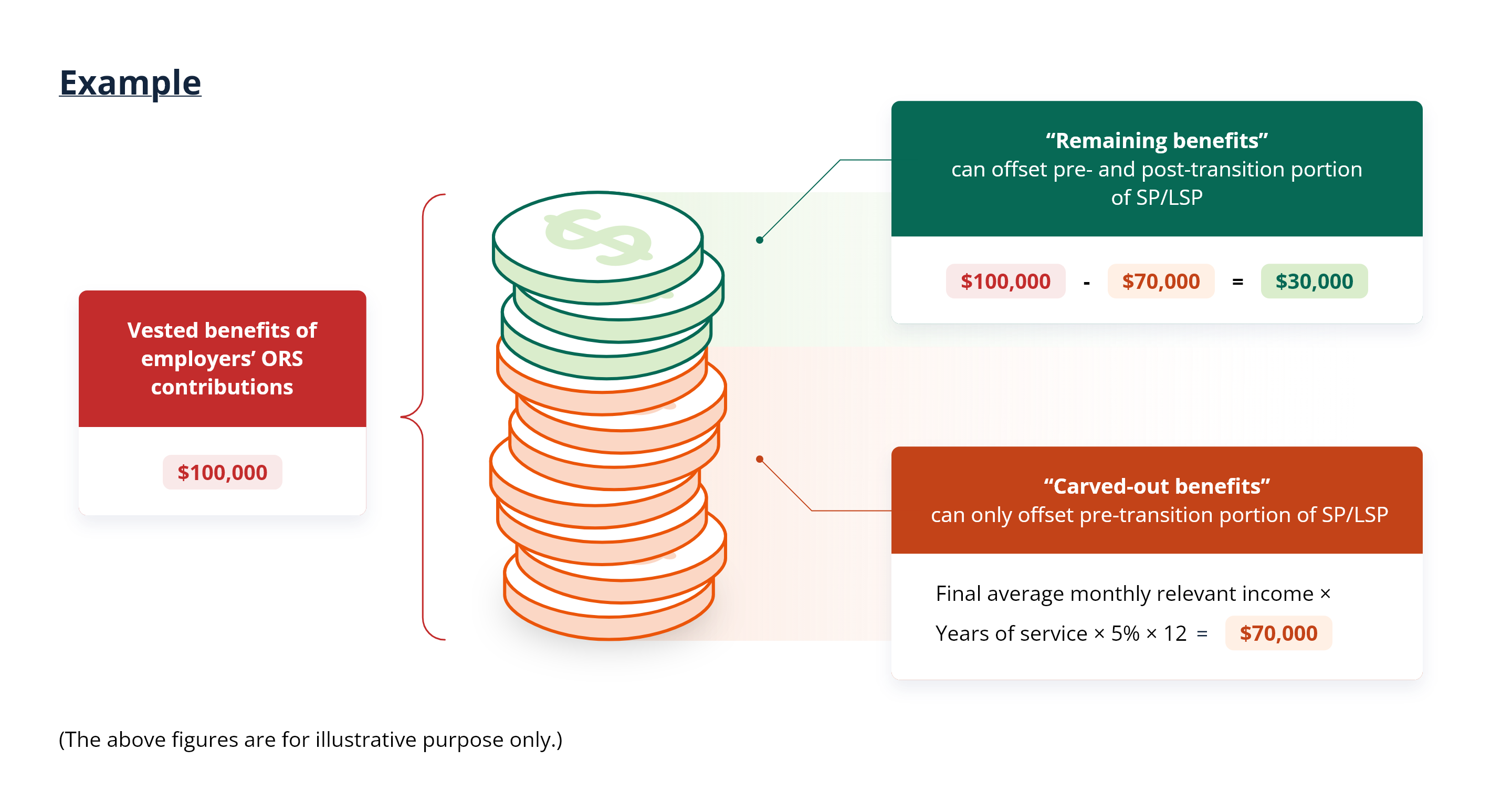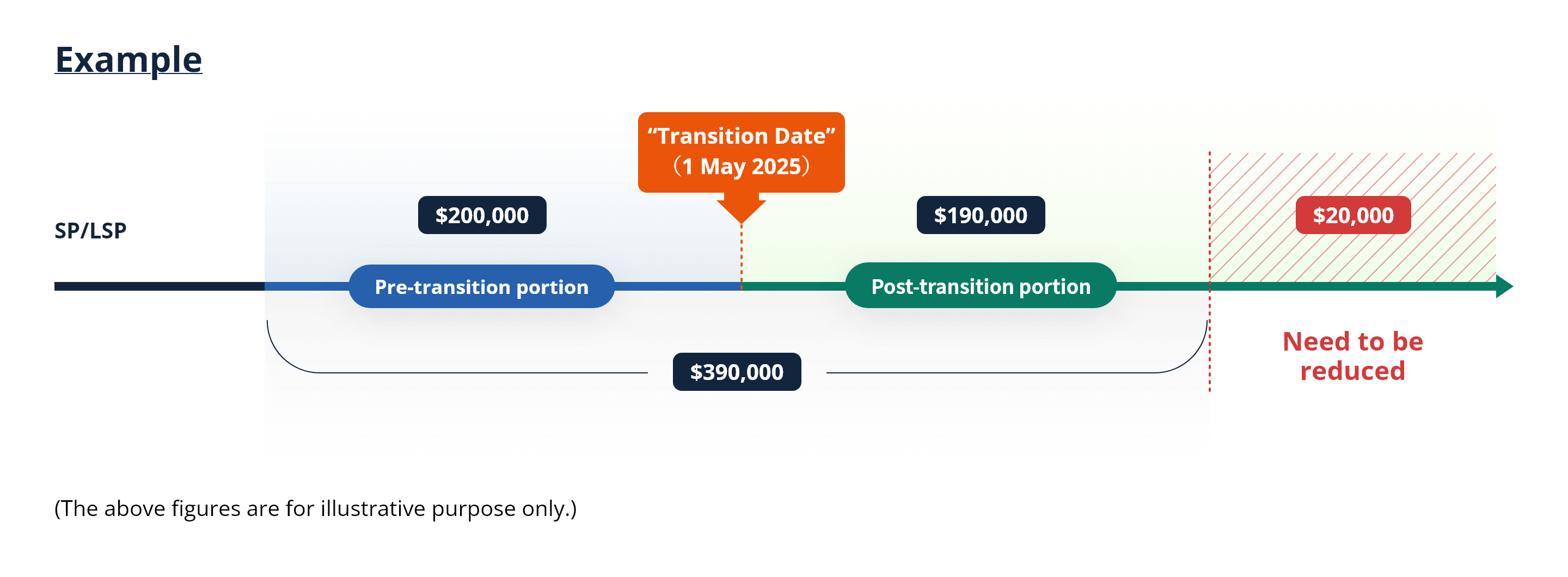The abolition of MPF offsetting arrangement is also applicable to employees who join the following Occupational Retirement Schemes (ORS):
-
ORS that are granted exemption under the Mandatory Provident Fund Schemes Ordinance (MPFSO)
-
provident funds under the Grant School Provident Fund Rules and the Subsidized Schools Provident Fund Rules
-
overseas ORS of employees from outside Hong Kong who are exempted from the MPF System
The abolition arrangement for ORS is the same as that for MPF schemes. However, since contributions under ORS are not differentiated into mandatory and voluntary portions, it is necessary to calculate the following from the vested benefits of employers’ ORS contributions:
-
“Carved-out benefits” – It is akin to the accrued benefits derived from the employer’s MPF mandatory contributions. It cannot offset employees’ severance payment (SP) and long service payment (LSP) in respect of the years of service starting from the “transition date”, but can offset employee’s SP/LSP in respect of the years of service before the “transition date”.
-
“Remaining benefits” – It is the remainder of vested benefits after deducting the “carved-out benefits”. It is akin to the accrued benefits derived from the employer’s MPF voluntary contributions. It can offset employees’ SP/LSP (irrespective of the years of service before or after the “transition date”).

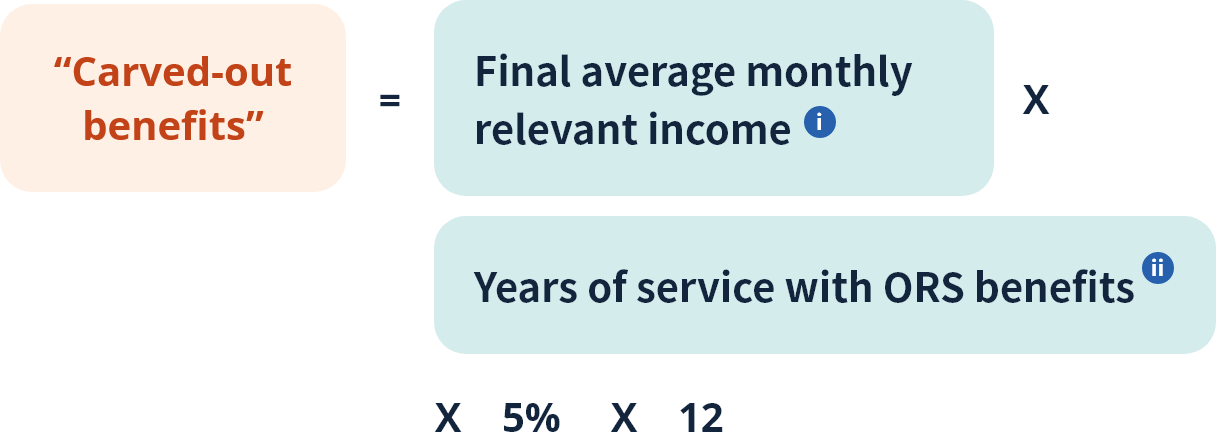
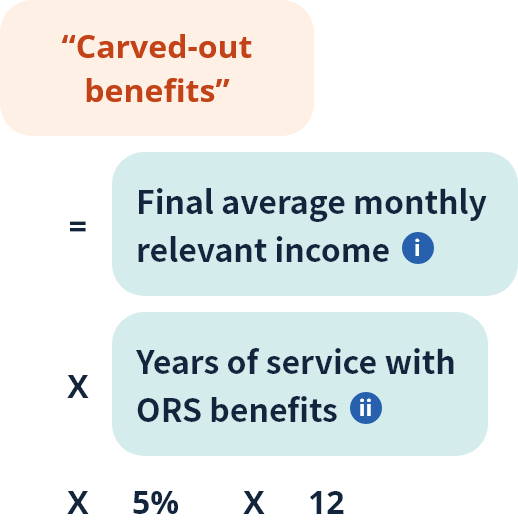
It means the employee’s average monthly relevant income in the 12 months immediately preceding the termination of employment, subject to the maximum level of relevant income under MPFSO. The current monthly maximum relevant income level is $30,000.
Only years of service on or after 1 December 2000 will count.
If the amount calculated using the above formula is higher than or equal to the amount of vested benefits of employers’ ORS contributions, the whole amount of vested benefits of employers’ ORS contributions would be regarded as the “Carved-out benefits”.


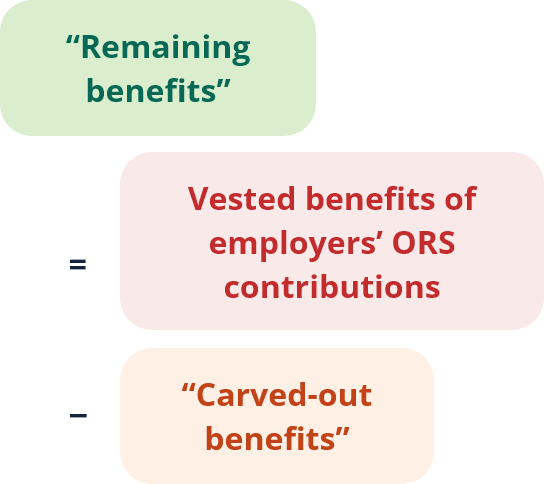
-
The calculation of SP/LSP is the same as the current calculation, i.e. calculated on the basis of the last full month’s wages immediately preceding the termination of employment
-
Cannot be offset by “carved-out benefits”
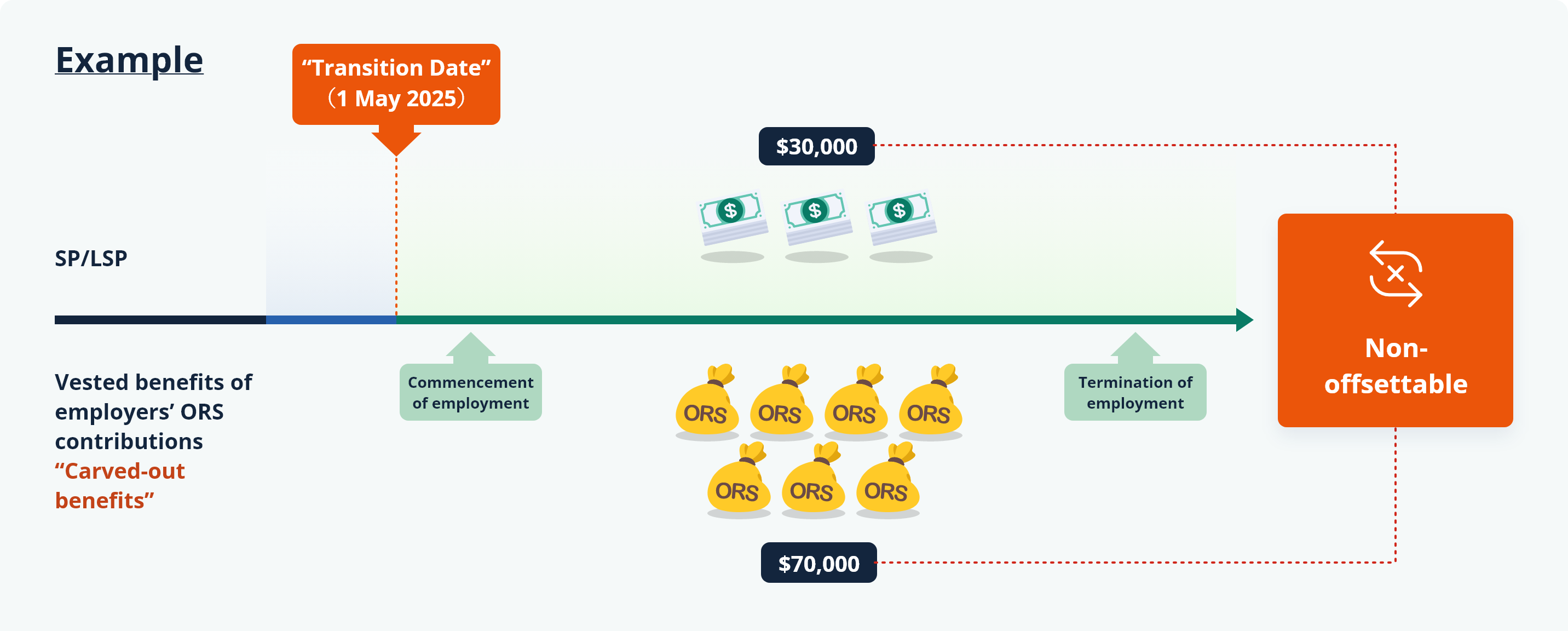 Zoom
Zoom
-
The employee retains the full amount of SP/LSP (i.e. $30,000) (assuming there are no “remaining benefits”)
-
The employee retains the full amount of “carved-out benefits” (i.e. $70,000)
-
The employee’s aggregate benefits
= SP/LSP + “Carved-out benefits”
= $30,000+ $70,000
= $100,000
(The above figures are for illustrative purpose only.)
Calculation of SP/LSP
-
The whole SP/LSP is in respect of the employment period on or after the “transition date”. The calculation is the same as the current calculation
-
The maximum amount of SP/LSP is $390,000

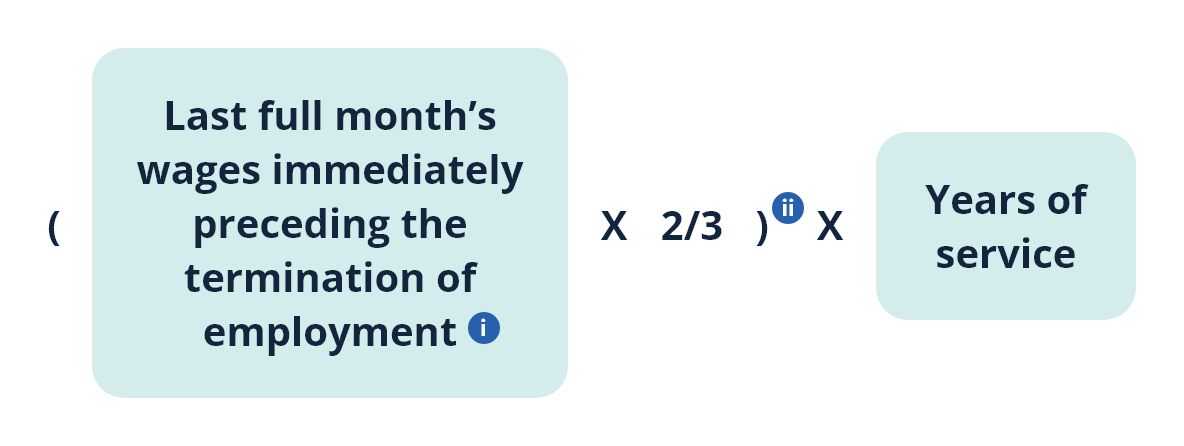
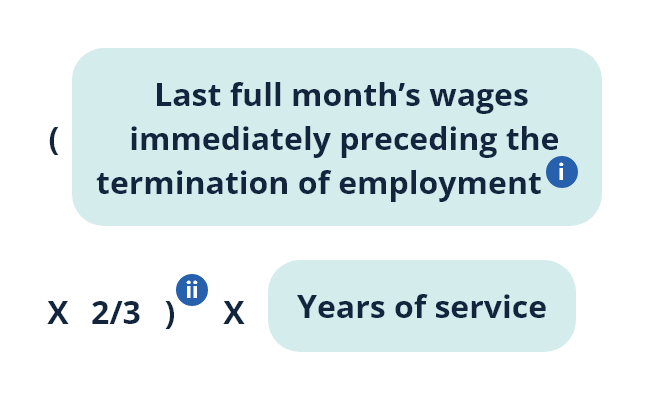
An employee may also select to use his/her average monthly wages over the last 12 months immediately preceding termination of employment for the calculation.
The sum should not exceed 2/3 of $22,500 (i.e. $15,000).

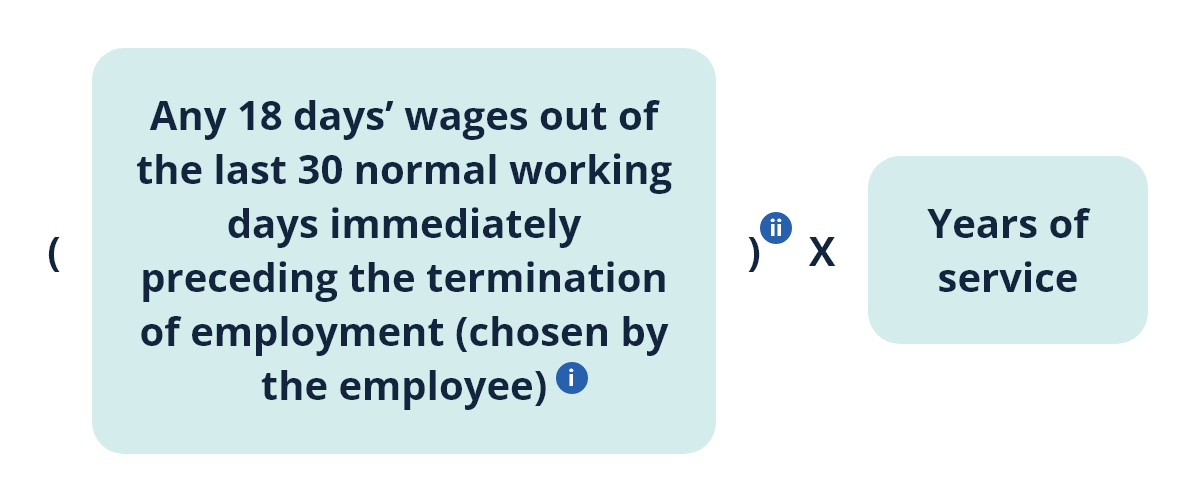

An employee may also select to use 18 times of his/her average daily wages over the last 12 months immediately preceding termination of employment for the calculation.
The sum should not exceed 2/3 of $22,500 (i.e. $15,000).
SP/LSP is divided by the “transition date” into two portions – pre-transition portion (i.e. the employment period before the “transition date”) and post-transition portion (i.e. the employment period starting from the “transition date”).
Post-transition portion
-
The calculation is the same as the current calculation, i.e. calculated on the basis of the last full month’s wages immediately preceding the termination of employment
-
Cannot be offset by “carved-out benefits”
 Zoom
Zoom
-
The employee retains the full amount of post-transition portion of SP/LSP (i.e. $30,000)
(The above figures are for illustrative purpose only.)
Calculation of post-transition portion of SP/LSP
-
Calculated on the basis of the last full month’s wages immediately preceding the termination of employment

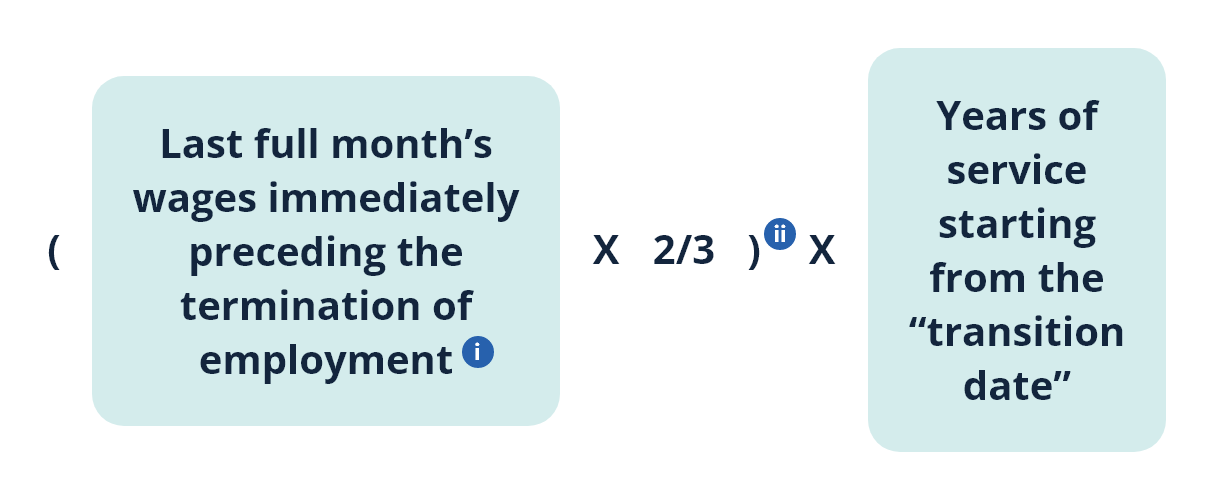
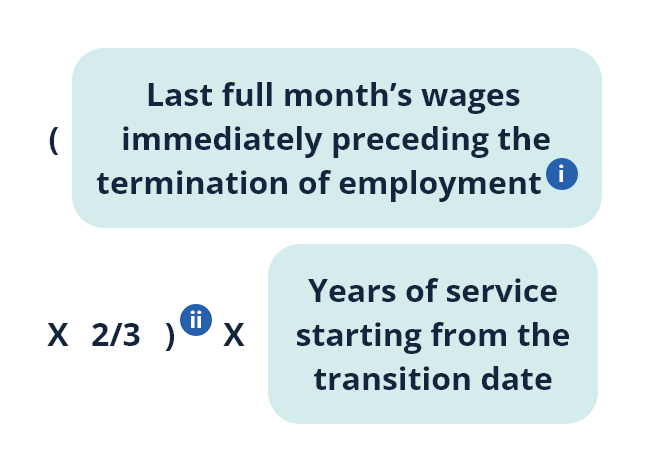
An employee may also select to use his/her average monthly wages over the last 12 months immediately preceding termination of employment for the calculation.
The sum should not exceed 2/3 of $22,500 (i.e. $15,000).

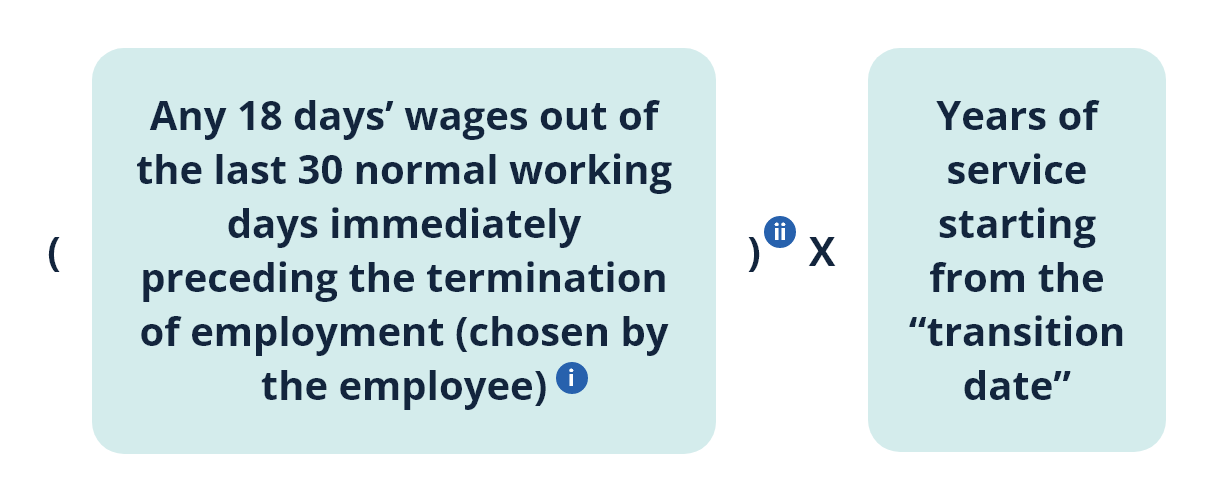
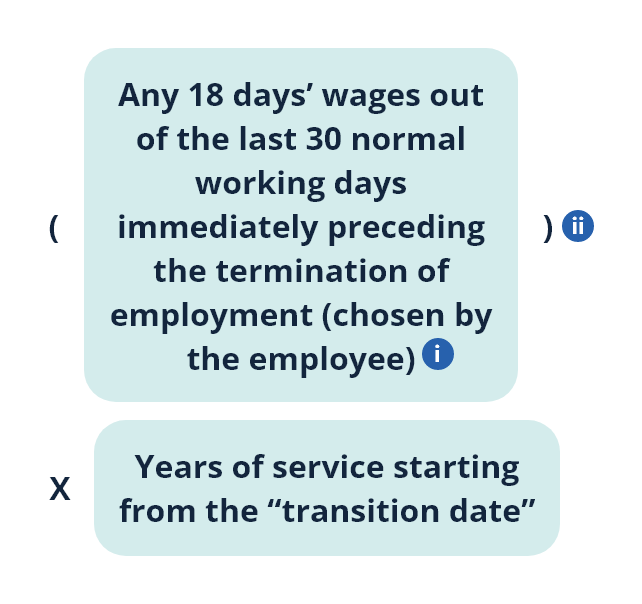
An employee may also select to use 18 times of his/her average daily wages over the last 12 months immediately preceding termination of employment for the calculation.
The sum should not exceed 2/3 of $22,500 (i.e. $15,000).
Pre-transition portion
-
Calculated on the basis of the last full month’s wages immediately preceding the “transition date”
-
Can continue to be offset by “carved-out benefits”
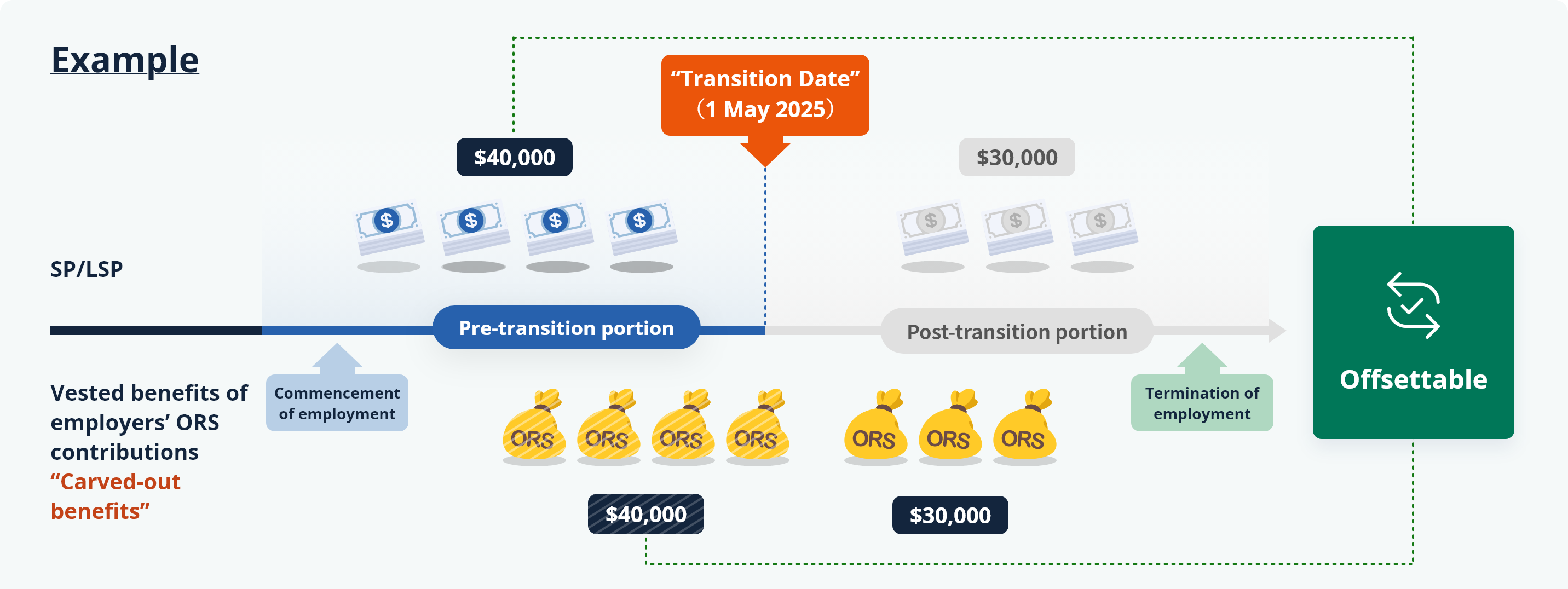 Zoom
Zoom
-
The employee retains the full amount of pre-transition portion of SP/LSP (i.e. $40,000)
-
The employee retains the remainder of the “carved-out benefits” after offsetting (i.e. $30,000)
-
The employee’s aggregate benefits
= Pre-transition portion of SP/LSP + Post-transition portion of SP/LSP + “Carved-out benefits” retained after offsetting
= $40,000 + $30,000 + $30,000
= $100,000
(The above figures are for illustrative purpose only.)
Calculation of pre-transition portion of SP/LSP
-
Calculated on the basis of the last full month’s wages immediately preceding the “transition date”

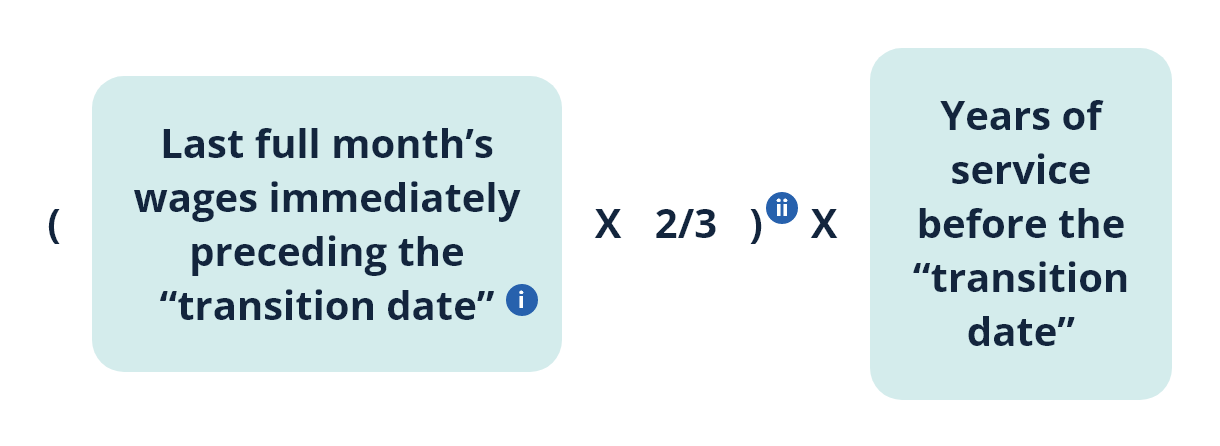
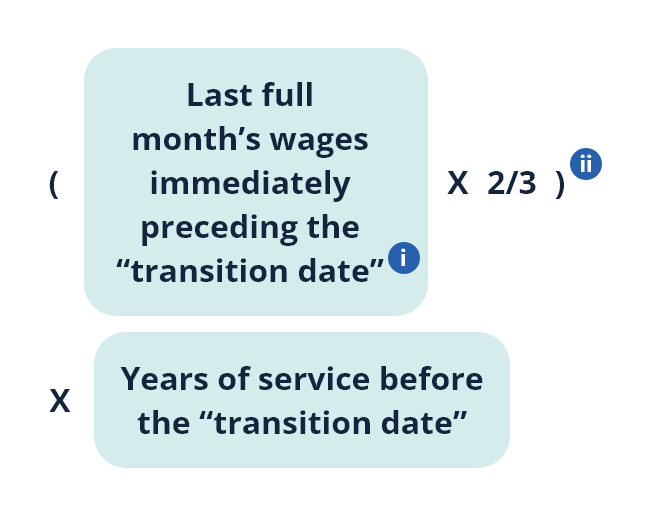
- An employee may also select to use his/her average monthly wages over the last 12 months immediately preceding 1 May 2025 for the calculation.
- For employment period preceding 1 May 2025 less than 12 months, average monthly wages for the employment period before 1 May 2025 may be selected for the calculation.
- For employment period preceding 1 May 2025 less than 1 month, the first full month’s wages after commencement of employment will be used for the calculation.
The sum should not exceed 2/3 of $22,500 (i.e. $15,000).

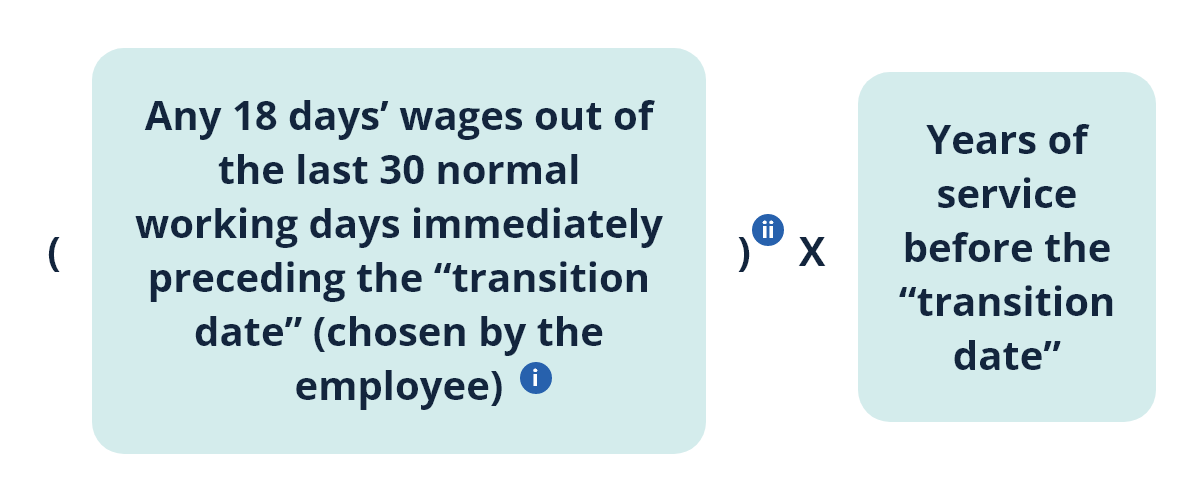
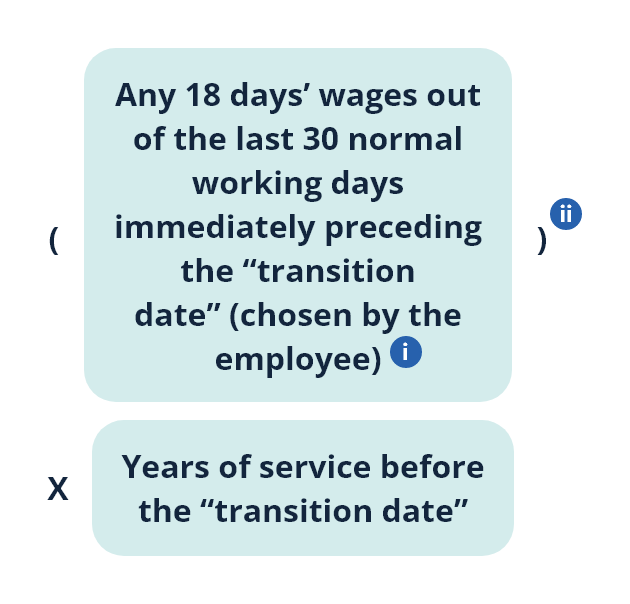
- An employee may also select to use 18 times of his/her average daily wages over the last 12 months immediately preceding 1 May 2025 for the calculation.
- For employment period preceding 1 May 2025 less than 12 months, 18 times of average daily wages for the employment period before 1 May 2025 may be selected for the calculation.
- For employment period preceding 1 May 2025 less than 30 normal working days, 18 days’ wages chosen out of the first 30 normal working days after commencement of employment will be used for the calculation.
The sum should not exceed 2/3 of $22,500 (i.e. $15,000).
If the total SP/LSP exceeds $390,000
-
The maximum amount of total SP/LSP remains at $390,000.
-
If the sum of the pre- and post-transition portions of SP/LSP exceeds $390,000, the amount in excess will be deducted from the post-transition portion.


